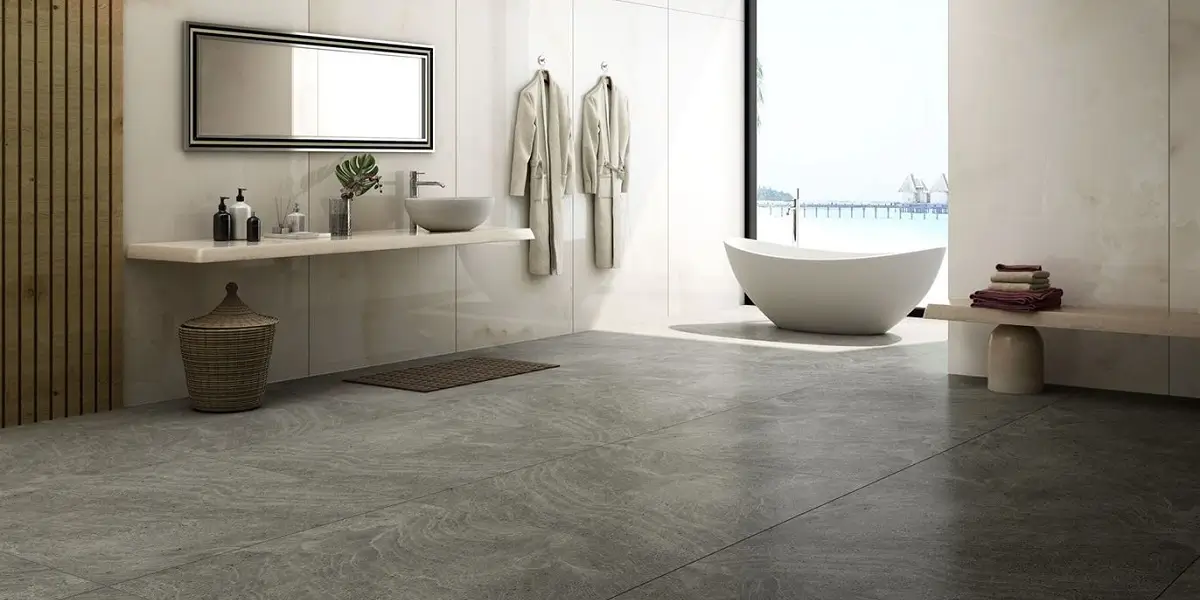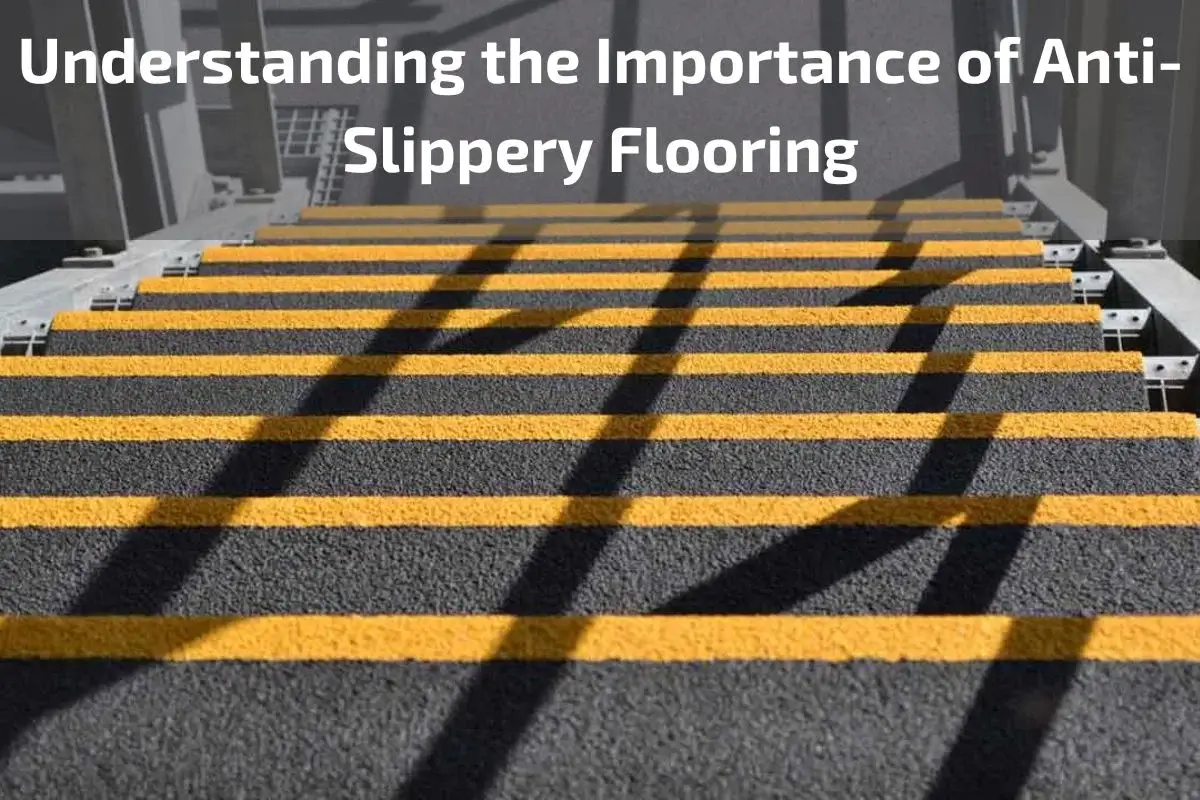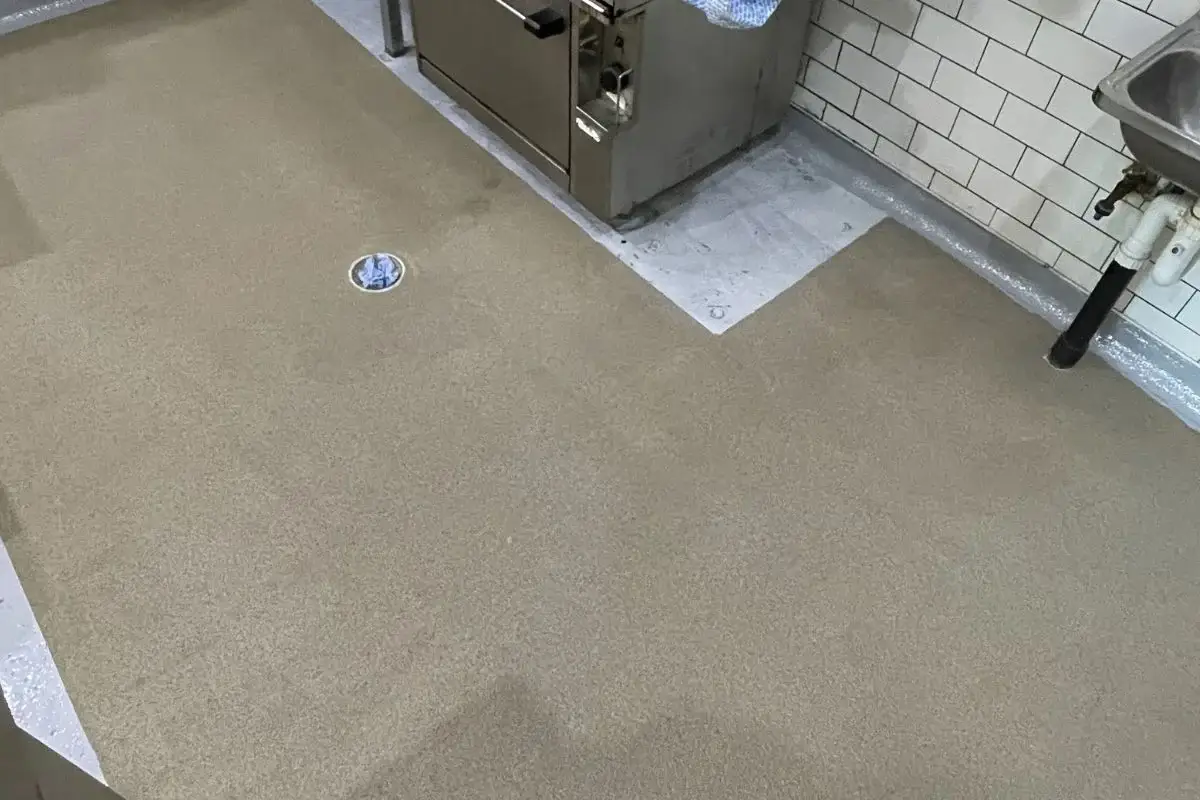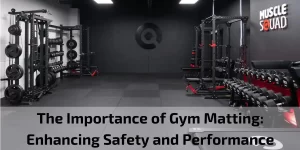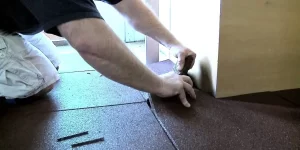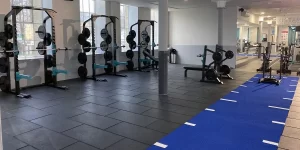In the realm of safety and accident prevention, few considerations are as crucial as the flooring beneath our feet. Every day, millions of people navigate various indoor and outdoor environments, encountering surfaces that can range from smooth and polished to rough and textured. However, one common hazard lurks beneath them all: the risk of slipping and falling.
The significance of anti-slippery flooring cannot be overstated in today’s world, where safety and well-being take precedence in both residential and commercial spaces. Whether in homes, workplaces, public areas, or recreational facilities, the choice of flooring material plays a pivotal role in mitigating the dangers posed by slippery surfaces.
In this article, we embark on a journey to understand the importance of anti-slippery flooring and its profound impact on safety, comfort, and peace of mind. From exploring the underlying risks associated with slippery surfaces to delving into the characteristics and benefits of anti-slip flooring solutions, we unravel the layers of significance that underscore the need for proactive safety measures.
The Importance of Safety in Anti-Slippery Flooring
Safety is a paramount concern in any environment, be it residential, commercial, or public. One of the most significant aspects of safety lies in the flooring beneath our feet. Slip and fall accidents pose a considerable risk, often resulting in injuries ranging from minor bruises to severe fractures and head trauma. In this context, the importance of safety in anti-slippery flooring cannot be overstated.
- Preventing Slip and Fall Accidents: The primary purpose of anti-slippery flooring is to minimize the risk of slip and fall accidents. By providing enhanced traction and grip, these specialized flooring solutions reduce the likelihood of individuals losing their footing on wet, oily, or otherwise slippery surfaces.
- Protecting Individuals and Property: Slip and fall accidents not only endanger the safety and well-being of individuals but also pose a significant risk to property owners and businesses. Anti-slippery flooring helps protect both people and property by creating a secure environment where the risk of accidents is minimized.
- Promoting Peace of Mind: For property owners, managers, and occupants alike, the presence of anti-slippery flooring promotes peace of mind. Knowing that the flooring surface is designed to prevent accidents instills confidence and reassurance, allowing individuals to navigate their surroundings with greater ease and comfort.
- Legal and Financial Considerations: Slip and fall accidents can lead to costly litigation and liability claims for property owners and businesses. Implementing anti-slippery flooring demonstrates a proactive approach to safety, reducing the risk of legal disputes and financial repercussions associated with accidents and injuries.
- Enhancing Accessibility: Anti-slippery flooring also plays a crucial role in enhancing accessibility for individuals with mobility impairments or disabilities. By providing a stable and secure surface, these flooring solutions ensure that everyone, regardless of age or physical ability, can navigate indoor and outdoor spaces safely and independently.
- Maintaining Reputation and Trust: Businesses and organizations that prioritize safety by investing in anti-slippery flooring earn the trust and confidence of their clients, customers, and stakeholders. A commitment to safety reflects positively on the reputation and credibility of the establishment, fostering loyalty and goodwill among patrons.
- Creating Safer Work Environments: In industrial and commercial settings, where heavy machinery, equipment, and hazardous materials are present, the importance of safety in anti-slippery flooring is even more pronounced. By reducing the risk of accidents and injuries in the workplace, these flooring solutions contribute to a safer and more productive work environment.
Benefits of Anti-Slippery Flooring
Anti-slippery flooring offers a multitude of benefits that extend beyond mere surface traction. These specialized flooring solutions are designed to enhance safety, minimize accidents, and promote peace of mind in various environments. Here are several key benefits of anti-slippery flooring:
- Enhanced Safety: The primary benefit of anti-slippery flooring is its ability to reduce the risk of slip and fall accidents. By providing superior traction and grip, these surfaces help individuals maintain their footing, even on wet, oily, or otherwise slippery surfaces.
- Prevention of Injuries: Slip and fall accidents can result in a wide range of injuries, from minor bruises to severe fractures and head trauma. Anti-slippery flooring helps prevent such injuries by minimizing the likelihood of accidents, thereby promoting a safer environment for occupants and visitors.
- Protection of Property and Assets: Slip and fall accidents not only pose a risk to individuals but also to property and assets. Anti-slippery flooring helps protect floors, furnishings, and equipment from damage caused by accidents, reducing the need for costly repairs or replacements.
- Peace of Mind: For property owners, managers, and occupants, the presence of anti-slippery flooring provides peace of mind. Knowing that the flooring surface is designed to prevent accidents instills confidence and reassurance, fostering a sense of safety and security in the environment.
- Compliance with Safety Regulations: Many industries and jurisdictions have specific safety regulations and standards governing flooring materials, particularly in public and commercial spaces. Anti-slippery flooring helps businesses and property owners comply with these regulations, mitigating liability risks and ensuring a safe environment for patrons and visitors.
- Improved Accessibility: Anti-slippery flooring enhances accessibility for individuals with mobility impairments or disabilities. By providing a stable and secure surface, these flooring solutions enable everyone, regardless of age or physical ability, to navigate indoor and outdoor spaces safely and independently.
- Long-Term Cost Savings: While the initial investment in anti-slippery flooring may be higher compared to conventional flooring materials, the long-term cost savings can be substantial. By reducing the frequency and severity of slip and fall accidents, anti-slippery flooring helps mitigate liability risks, lower insurance premiums, and minimize expenses associated with injuries and property damage.
- Enhanced Reputation and Trust: Businesses and organizations that prioritize safety by investing in anti-slippery flooring demonstrate a commitment to the well-being of their clients, customers, and employees. This dedication to safety enhances the reputation and trustworthiness of the establishment, fostering loyalty and positive relationships with stakeholders.
Types of Anti-Slip Flooring Materials
Anti-slip flooring materials come in a variety of options, each offering unique characteristics and benefits tailored to specific environments and applications. Understanding the different types of anti-slip flooring materials is essential for selecting the most suitable solution for safety and functionality. Here are several common types of anti-slip flooring materials:
Rubber Flooring:
- Features: a. High coefficient of friction, providing excellent traction and slip resistance. b. Durable and resilient, capable of withstanding heavy foot traffic and wear. c. Shock-absorbing properties, reducing the risk of impact-related injuries. d. Suitable for indoor and outdoor applications, including wet and oily environments.
- Applications: a. Commercial kitchens and food processing facilities. b. Gymnasiums, fitness centers, and sports facilities. c. Industrial workplaces and manufacturing plants. d. Pool decks, walkways, and outdoor recreational areas.
Vinyl Flooring:
- Features: a. Textured surface patterns designed to enhance traction and grip. b. Water-resistant and easy to clean, making it ideal for wet and high-traffic areas. c. Durable and long-lasting, with options for additional wear layers for added protection. d. Available in a wide range of colors, styles, and designs to suit various aesthetic preferences.
- Applications: a. Commercial and retail spaces, including entrances, lobbies, and corridors. b. Healthcare facilities, clinics, and nursing homes. c. Educational institutions, classrooms, and laboratories. d. Residential bathrooms, kitchens, and entryways.
Textured Tiles:
- Features: a. Surface textures and patterns designed to provide enhanced grip and slip resistance. b. Available in various materials, including ceramic, porcelain, and natural stone. c. Resistant to moisture, stains, and chemicals, ensuring durability and longevity. d. Suitable for indoor and outdoor use, with options for different levels of slip resistance.
- Applications: a. Bathroom and shower floors in residential and commercial settings. b. Pool decks, patios, and outdoor entertainment areas. c. Commercial and institutional spaces with high foot traffic and exposure to water. d. Retail and hospitality environments where safety and aesthetics are priorities.
Epoxy Coatings:
- Features: a. Seamless and non-porous surface, resistant to water, chemicals, and abrasion. b. Highly customizable, with options for additives and aggregates to enhance slip resistance. c. Fast-curing and durable, providing long-term protection and performance. d. Suitable for interior and exterior applications, including concrete substrates.
- Applications: a. Industrial and commercial floors in warehouses, factories, and automotive facilities. b. Garage floors and workshop areas in residential properties. c. Retail and commercial spaces requiring a durable and low-maintenance flooring solution. d. Healthcare and laboratory environments where cleanliness and safety are paramount
Factors to Consider When Choosing Anti-Slip Flooring
Choosing the right anti-slip flooring involves careful consideration of various factors to ensure optimal safety, functionality, and durability. From the specific requirements of the environment to the preferences of occupants, several key factors should be taken into account when selecting anti-slip flooring materials. Here are some essential factors to consider:
Environment and Usage:
- Identify the specific environment where the anti-slip flooring will be installed, including indoor or outdoor settings, wet or dry conditions, and exposure to chemicals or oils.
- Consider the intended usage of the space, such as heavy foot traffic areas, high-risk zones prone to spills or moisture, and specialized environments like kitchens, bathrooms, or industrial facilities.
- Evaluate the climate and weather conditions of the region, as well as any seasonal variations that may impact the performance and longevity of the anti-slip flooring material.
Slip Resistance and Traction:
- Assess the slip resistance rating and coefficient of friction of different anti-slip flooring materials, ensuring they meet or exceed safety standards and regulatory requirements.
- Consider the surface texture and pattern of the flooring material, as well as any additives or aggregates used to enhance traction and grip in wet or slippery conditions.
- Test the slip resistance of the flooring material under simulated conditions to evaluate its effectiveness in preventing slip and fall accidents.
Maintenance Requirements:
- Evaluate the ease of cleaning and maintenance for different types of anti-slip flooring materials, considering factors such as stain resistance, chemical compatibility, and resistance to mold or mildew.
- Determine the frequency and intensity of maintenance tasks required to keep the flooring surface clean, hygienic, and slip-resistant over time.
- Consider the availability of cleaning products, equipment, and professional services necessary to maintain the anti-slip flooring material effectively.
Aesthetic Considerations:
- Balance safety considerations with aesthetic preferences, choosing anti-slip flooring materials that complement the overall design and decor of the space.
- Explore options for color, texture, and pattern that enhance the visual appeal of the environment while maintaining optimal slip resistance and functionality.
- Consider the long-term durability and appearance retention of the anti-slip flooring material, ensuring it remains aesthetically pleasing and functional for years to come.
Budget and Cost-Effectiveness:
- Establish a budget for the installation and maintenance of anti-slip flooring, considering the initial cost of materials, labor, and any additional expenses such as surface preparation or substrate repairs.
- Evaluate the long-term cost-effectiveness of different anti-slip flooring materials, taking into account factors such as durability, maintenance requirements, and potential savings in liability and insurance costs.
- Compare the return on investment (ROI) of various anti-slip flooring options, considering both the upfront investment and the potential cost savings and benefits over the lifespan of the material.
Installation and Maintenance Tips for Anti-Slip Flooring
Proper installation and regular maintenance are essential for ensuring the effectiveness and longevity of anti-slip flooring materials. Whether in residential, commercial, or industrial settings, following best practices can help maximize safety and performance. Here are some installation and maintenance tips for anti-slip flooring:
Installation Guidelines:
Surface Preparation: Ensure the substrate is clean, dry, and free of dust, debris, and contaminants before installing anti-slip flooring materials.
Adhesive Selection: Use adhesives recommended by the manufacturer for optimal bonding and adhesion of the flooring material to the substrate.
Proper Alignment: Align and position the anti-slip flooringmaterial carefully to achieve uniform coverage and minimize gaps or overlaps.
Allow for Expansion: Leave expansion joints or gaps around the perimeter of the flooring installation to accommodate natural expansion and contraction of the material.
Follow Manufacturer Instructions: Adhere to the installation guidelines provided by the manufacturer to ensure proper installation and warranty coverage.
Maintenance Practices:
Regular Cleaning: Establish a routine cleaning schedule to remove dirt, debris, and spills from the surface of the anti-slip flooring material.
Use Mild Cleaners: Use mild detergents or cleaning solutions recommended by the manufacturer to avoid damage to the anti-slip properties of the flooring material.
Avoid Abrasive Cleaners: Avoid using abrasive cleaners, scouring pads, or harsh chemicals that can scratch or degrade the surface of the anti-slip flooring.
Prompt Spill Cleanup: Clean up spills and liquids immediately to prevent staining, discoloration, or damage to the flooring material.
Inspect Regularly: Conduct regular inspections of the anti-slip flooring surface for signs of wear, damage, or deterioration, and address any issues promptly.
Repair as Needed: Repair or replace damaged or worn sections of the anti-slip flooring material to maintain optimal slip resistance and safety.
Consider Professional Maintenance: Consider hiring professional cleaners or maintenance technicians to perform deep cleaning and specialized maintenance tasks as needed.
Safety Precautions:
Use Proper Equipment: Use appropriate personal protective equipment (PPE) such as gloves, goggles, and respirators when handling cleaning chemicals or performing maintenance tasks.
Follow Safety Protocols: Follow safety protocols and procedures outlined by regulatory agencies and industry standards organizations when working with anti-slip flooring materials.
Provide Training: Provide training to maintenance staff and occupants on proper cleaning and maintenance procedures to ensure safe and effective upkeep of the flooring surface.
Address Hazards Promptly: Identify and address potential safety hazards such as loose edges, protrusions, or damaged areas of the anti-slip flooring material to prevent accidents or injuries.
Conclusion
In conclusion, anti-slip flooring plays a vital role in enhancing safety, preventing accidents, and promoting peace of mind in various environments. From residential homes to commercial buildings and industrial facilities, the installation of anti-slip flooring materials is essential for minimizing the risk of slip and fall accidents and protecting individuals and property.

